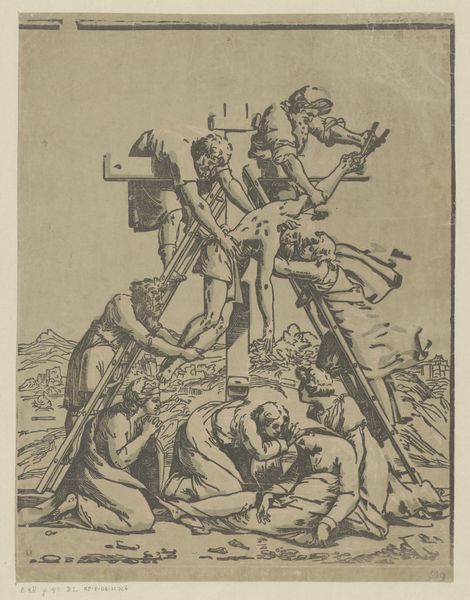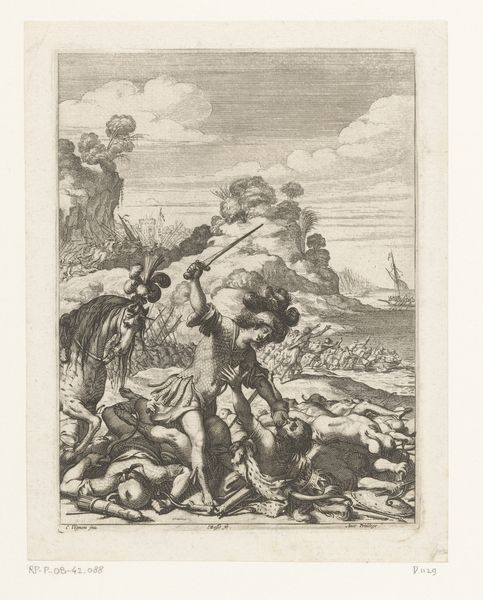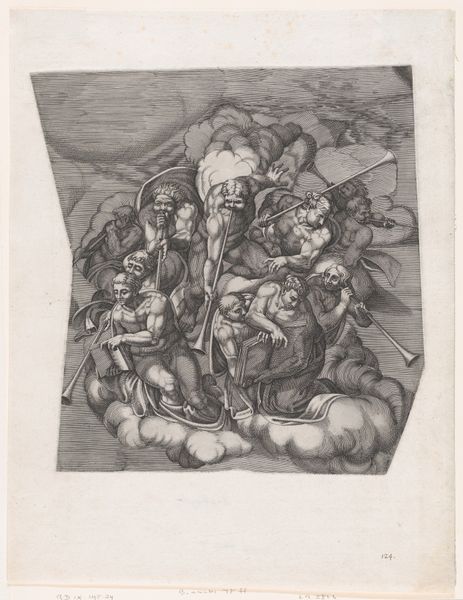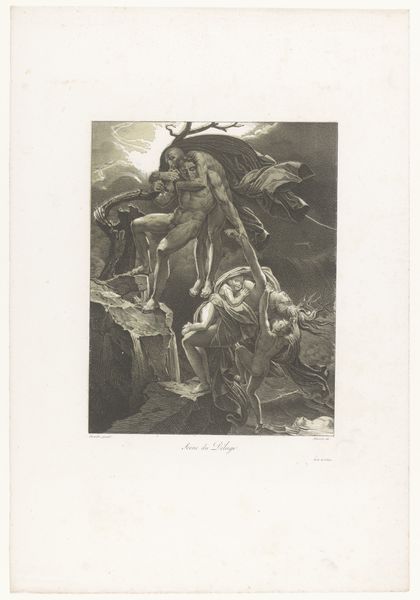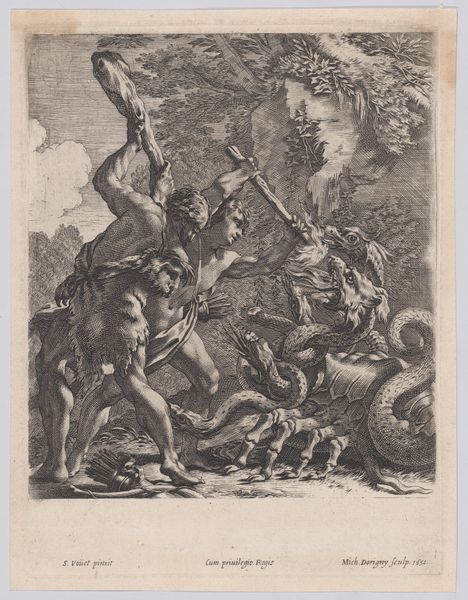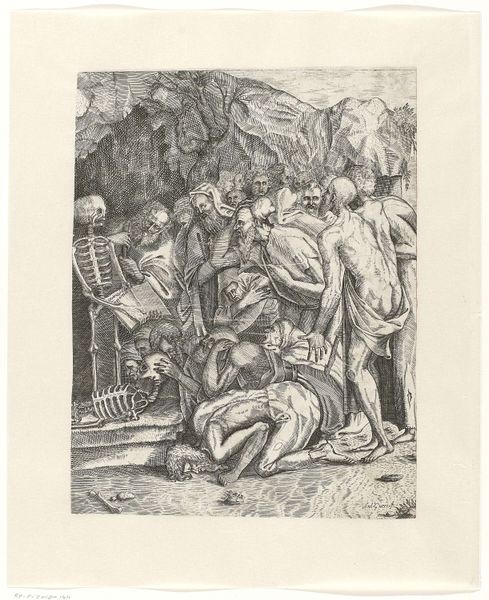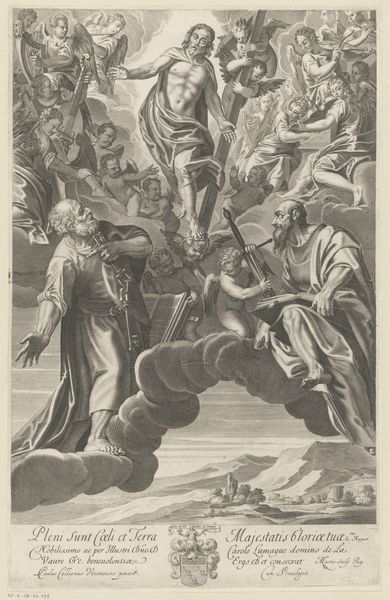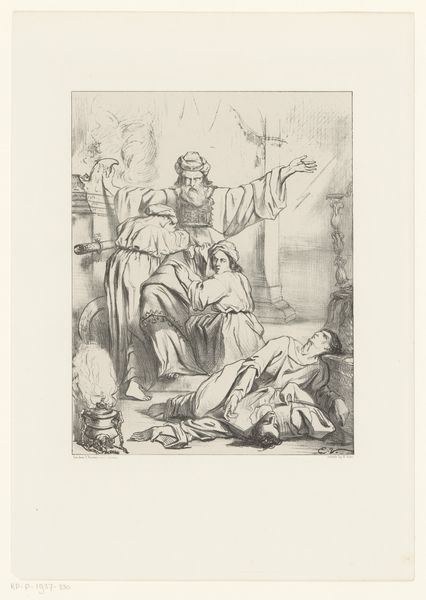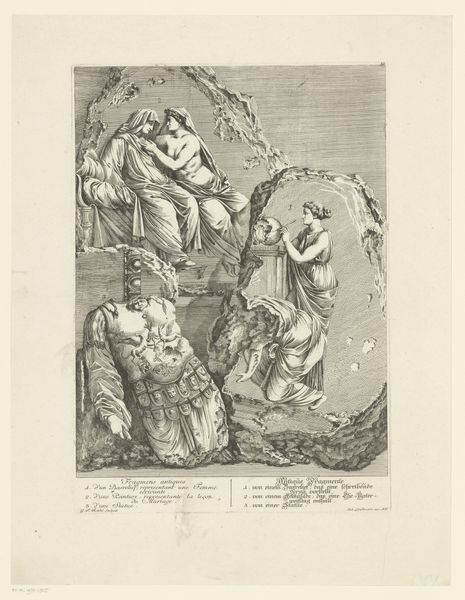
print, relief-print, engraving
# print
#
relief-print
#
figuration
#
line
#
history-painting
#
italian-renaissance
#
engraving
Dimensions: height 337 mm, width 282 mm
Copyright: Rijks Museum: Open Domain
Ugo da Carpi made this print, The Descent from the Cross, using a woodcut technique called chiaroscuro. It's not just carving a line, but using tone to model the forms. Think about the labor involved in creating this image. Da Carpi had to carve away the wood around each line and shape, in separate blocks, each inked with a different tone. By carefully aligning and printing these blocks, he achieved a subtle, almost painterly effect. It's a reproductive medium, allowing images to be disseminated more widely. The very material – wood – gives the print a distinctive character. Notice the way the grain influences the texture, and how the carving creates a sense of depth and shadow. This wasn't just about replicating an image, but about exploring the potential of printmaking as a creative medium in its own right. It's a tour de force of craft, and reminds us that printmaking, like any other artistic endeavor, is rooted in process and material.
Comments
rijksmuseum about 2 years ago
⋮
The German invention of the colour woodcut caught on in Italy. Ugo da Carpi was the first to use this technique there. The Descent from the Cross after a design by Raphael is one of his earliest prints. The printmaker used two rather than one tone block: one for the light blue sections, and the other for the dark blue shadows.
Join the conversation
Join millions of artists and users on Artera today and experience the ultimate creative platform.

